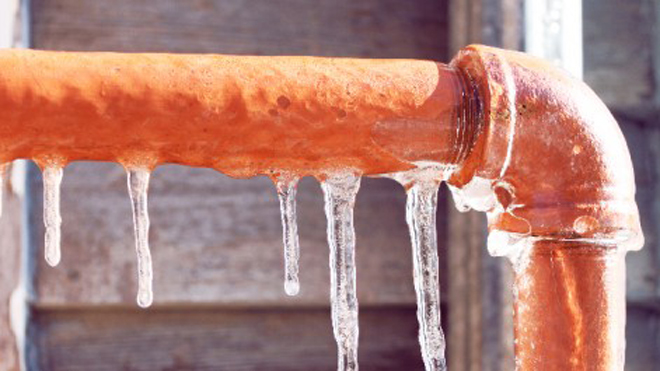Tips to Protect Pipes from Freezing: Specialist Advice
Tips to Protect Pipes from Freezing: Specialist Advice
Blog Article
How do you actually feel about Prevent Frozen Pipes ?

Cold weather can wreak havoc on your plumbing, specifically by freezing pipelines. Right here's how to prevent it from occurring and what to do if it does.
Intro
As temperature levels decrease, the danger of frozen pipes rises, possibly leading to costly repair services and water damage. Understanding how to stop icy pipelines is critical for home owners in cool environments.
Comprehending Frozen Pipelines
What triggers pipes to ice up?
Pipelines freeze when revealed to temperatures listed below 32 ° F (0 ° C) for prolonged periods. As water inside the pipes freezes, it expands, putting pressure on the pipe walls and possibly creating them to burst.
Dangers and damages
Frozen pipes can lead to water supply disruptions, property damages, and pricey repair services. Burst pipes can flood homes and create considerable architectural damages.
Indications of Frozen Pipeline
Recognizing frozen pipes early can stop them from bursting.
How to determine icy pipes
Look for reduced water flow from faucets, unusual smells or sounds from pipes, and visible frost on exposed pipelines.
Avoidance Tips
Protecting susceptible pipes
Cover pipes in insulation sleeves or make use of heat tape to shield them from freezing temperature levels. Focus on pipes in unheated or outside locations of the home.
Heating techniques
Maintain indoor spaces sufficiently heated, especially locations with plumbing. Open up cupboard doors to allow cozy air to distribute around pipelines under sinks.
Securing Outside Plumbing
Garden hose pipes and outside taps
Separate and drain pipes yard pipes before winter months. Mount frost-proof spigots or cover outdoor taps with insulated caps.
What to Do If Your Pipes Freeze
Immediate activities to take
If you suspect frozen pipelines, maintain taps available to eliminate stress as the ice thaws. Make use of a hairdryer or towels soaked in hot water to thaw pipes gradually.
Long-Term Solutions
Architectural adjustments
Consider rerouting pipes away from exterior walls or unheated areas. Add additional insulation to attics, basements, and crawl spaces.
Updating insulation
Purchase high-grade insulation for pipes, attic rooms, and wall surfaces. Correct insulation aids keep regular temperature levels and minimizes the danger of frozen pipelines.
Verdict
Protecting against icy pipes requires proactive actions and fast reactions. By comprehending the reasons, indicators, and preventive measures, homeowners can secure their pipes throughout winter.
5 Ways to Prevent Frozen Pipes
Drain Outdoor Faucets and Disconnect Hoses
First, close the shut-off valve that controls the flow of water in the pipe to your outdoor faucet. Then, head outside to disconnect and drain your hose and open the outdoor faucet to allow the water to completely drain out of the line. Turn off the faucet when done. Finally, head back to the shut-off valve and drain the remaining water inside the pipe into a bucket or container. Additionally, if you have a home irrigation system, you should consider hiring an expert to clear the system of water each year.
Insulate Pipes
One of the best and most cost-effective methods for preventing frozen water pipes is to wrap your pipes with insulation. This is especially important for areas in your home that aren’t exposed to heat, such as an attic. We suggest using foam sleeves, which can typically be found at your local hardware store.
Keep Heat Running at 65
Your pipes are located inside your walls, and the temperature there is much colder than the rest of the house. To prevent your pipes from freezing, The Insurance Information Institute suggests that you keep your home heated to at least 65 degrees, even when traveling. You may want to invest in smart devices that can keep an eye on the temperature in your home while you’re away.
Leave Water Dripping
Moving water — even a small trickle — can prevent ice from forming inside your pipes. When freezing temps are imminent, start a drip of water from all faucets that serve exposed pipes. Leaving a few faucets running will also help relieve pressure inside the pipes and help prevent a rupture if the water inside freezes.
Open Cupboard Doors
Warm your kitchen and bathroom pipes by opening cupboards and vanities. You should also leave your interior doors ajar to help warm air circulate evenly throughout your home.

I found that content on Winter Plumbing Precautions: Preventing Frozen Pipes while doing a search on the search engines. Those who enjoyed our blog entry please consider to pass it around. I recognize the value of reading our article about How To Avoid Freezing Pipes.
Recurring Service Plans Report this page